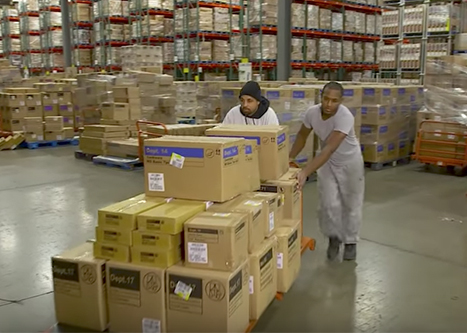
There are many types of businesses and any structure with four walls and a ceiling can be assessed with a flying star chart. The Flying Star chart gives us an impression of what kind of magnetic field was established inside the structure, based on when it was built and what direction it is aligned. That magnetic field will have a powerful influence on all those who dwell inside. There is even speculation that inanimate objects, like the inventory, can be affected as well. This holds true for all warehouse spaces.
When evaluating a business which is attached to warehouse space, usually much less emphasis is placed on the warehouse space (aka storage space), compared to the attached offices or sales or retail area. Where human beings work, make sales, conduct business (over the phone, internet or in person) is much more important than where different items are stored in the warehouse. And yet, if there are employees working in a warehouse space, it is also possible and good judgment to have a look at their work space.
In any given built environment, there may be areas which can cause or contribute to accidents and warehouse spaces might be even riskier places to work than a normal office space. Tall shelves, sharp objects and an industrial type of setting could easily aggravate a hazardous potential. As well, if someone is in fact working in a warehouse space, all the more reason to employ as many Feng Shui applications as possible since by definition, the warehouse space is not an ideal area to work in. For example, those working in a warehouse may not be around much natural light or ventilation, unless the business keeps the large roller door open during the day.
A person working in a warehouse may also be exposed to more chemicals, depending on what is stored in the warehouse and what kind of production may also be taking place in the area. For example, I have one client with an organic lotion company. The warehouse used to also be the same location where the lotions were formulated and bottled, as well as stored. His work space included a row of offices with exterior windows. However, another client has a tile company where the tiles are cut and stored in the warehouse section and there is a lot of machinery stationed there.
To the best of our ability, a classically trained practitioner needs to figure out how the business can incorporate some of the natural elements into the built space, but also not allow for any adjustment to get in the way of storage or production. One client of mine has an auto collision repair shop where the very nature of the warehouse must remain rather raw and there were a limited number of sensible areas where the paint room could be placed. Often times, with a warehouse space, the walls need to be used as locations for elemental adjustments and more than one audit required that the business paint a wall red (for fire) or blue (for water). Areas of a warehouse that might need the metal element often have the real element (such as steel) already present in the machinery or steel shelves.
After we have done whatever is possible and practical with the warehouse, the connected offices are still the priority. The entrance into any business can attract or repel business. The location of where key people (sales, marketing) are sitting can also help determine the success of the business.
Some staff sit in areas that could undermine good work performance and all this can be addressed within the scope of a traditional Feng Shui evaluation. Data that is gathered includes the age of the building, compass alignment, outside influences, architectural lay-out for best qi flow, current cycles the building is in, birth dates of important personnel and the details of micro-managing each individual office or cubicle space.
Author: Kartar Diamond
Company: Feng Shui Solutions ®
From the Architectural & Design Blog Series
